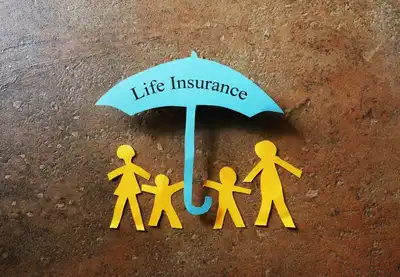The two main types of individual life insurance policies are term life insurance and whole life insurance, also known as permanent life insurance. Additionally, there is group life insurance offered through employers, which may include options for additional coverage.
For older clients, there are life insurance products designed to cover end-of-life expenses, as standard life insurance can become very expensive or unavailable at later stages in life. Supplemental coverage allows individuals to purchase smaller policies at a more affordable cost.
For those eligible for standard life insurance, the choice is typically between term and whole life policies. Approximately 40% of clients opt for term policies, while about 60% choose some form of whole life insurance.
Term life insurance is effective for a specified term only and needs to be renewed or it will expire. Clients often select longer terms, such as 20 or 30 years, with the plan to let the coverage end when they no longer need it.

Whole life insurance, in theory, can remain in effect for an individual’s entire lifetime. However, the coverage becomes considerably more expensive in later years, especially as one ages and the likelihood of death increases.
Both types of policies have their advantages and disadvantages. Whole life policies generate more profit for insurance companies and salespeople. The decision on which type to choose is influenced by insurance advisors, but it is crucial for individuals to carefully assess their needs and not solely rely on salesperson recommendations.
Having a basic understanding of term and whole life insurance is essential, especially when considering the savings or investment component that whole life offers but term life does not. Evaluating alternatives to this aspect is crucial in making an informed decision about coverage and financial planning.
Term Life Policies Are Pure Life Insurance
Term life insurance policies solely provide life insurance coverage without any additional investment component. They cover individuals for a set number of years, typically ranging from 1 to 30 years, with longer terms being more popular. While shorter terms may be cheaper initially, longer terms may be more beneficial as they provide coverage for a longer period and avoid the risk of increased premiums due to age-related factors.
Choosing a fixed or “level” benefit, where the coverage remains the same throughout the term, is more common among clients, although some may opt for decreasing benefits if their insurance needs decrease over time due to accumulating wealth.
The cost of premiums can either remain fixed throughout the policy’s term or be subject to increases, depending on the policy chosen. Policies with fixed premium costs may be more expensive, but they offer the advantage of not needing to requalify as often and provide more stability in premium payments.
Longer fixed terms also mitigate the risk of facing reassessment at higher rates or being unable to renew the policy if life expectancy has decreased significantly. However, there are limitations, as insurance companies generally do not offer coverage beyond the age of 80, and premiums can escalate considerably for policies extending into the senior years.
Whole Life Insurance Policies
Deciding between term life insurance and whole life insurance depends on several factors, primarily one’s budget and financial goals. Term life insurance is considerably cheaper than whole life insurance, making it a more affordable option for many individuals. Term policies provide coverage for a specific term, usually ranging from 1 to 30 years, and are well-suited for those who want life insurance for a specific period.
On the other hand, whole life insurance offers coverage for the individual’s entire life, which may appeal to those seeking lifelong protection. However, whole life insurance is significantly more expensive, especially as the insured ages and the risk of death increases.
Whole life insurance consists of two components: the insurance part and the savings part. The savings component accumulates over time and can be used for various purposes, such as helping to pay the higher premiums as the insured gets older. This savings component acts as a form of retirement and estate planning.
The savings aspect of whole life insurance can be viewed as a savings vehicle, aiming to keep up with inflation or at least come close to it. While some recommend investing money elsewhere for potentially better returns, others who prefer conservative investments may find standard whole life insurance to be a decent option.
There are different types of whole life insurance, such as universal life and variable life, offering more flexible options and the potential for higher returns through investments in stocks and bonds. The suitability of each type depends on individual circumstances and risk tolerance.
Ultimately, individuals should carefully assess their financial situation, risk tolerance, and investment goals before deciding on the type of life insurance that best suits their needs. It is essential to weigh the pros and cons of each option and make an informed decision rather than solely relying on the recommendations of insurance advisors.




